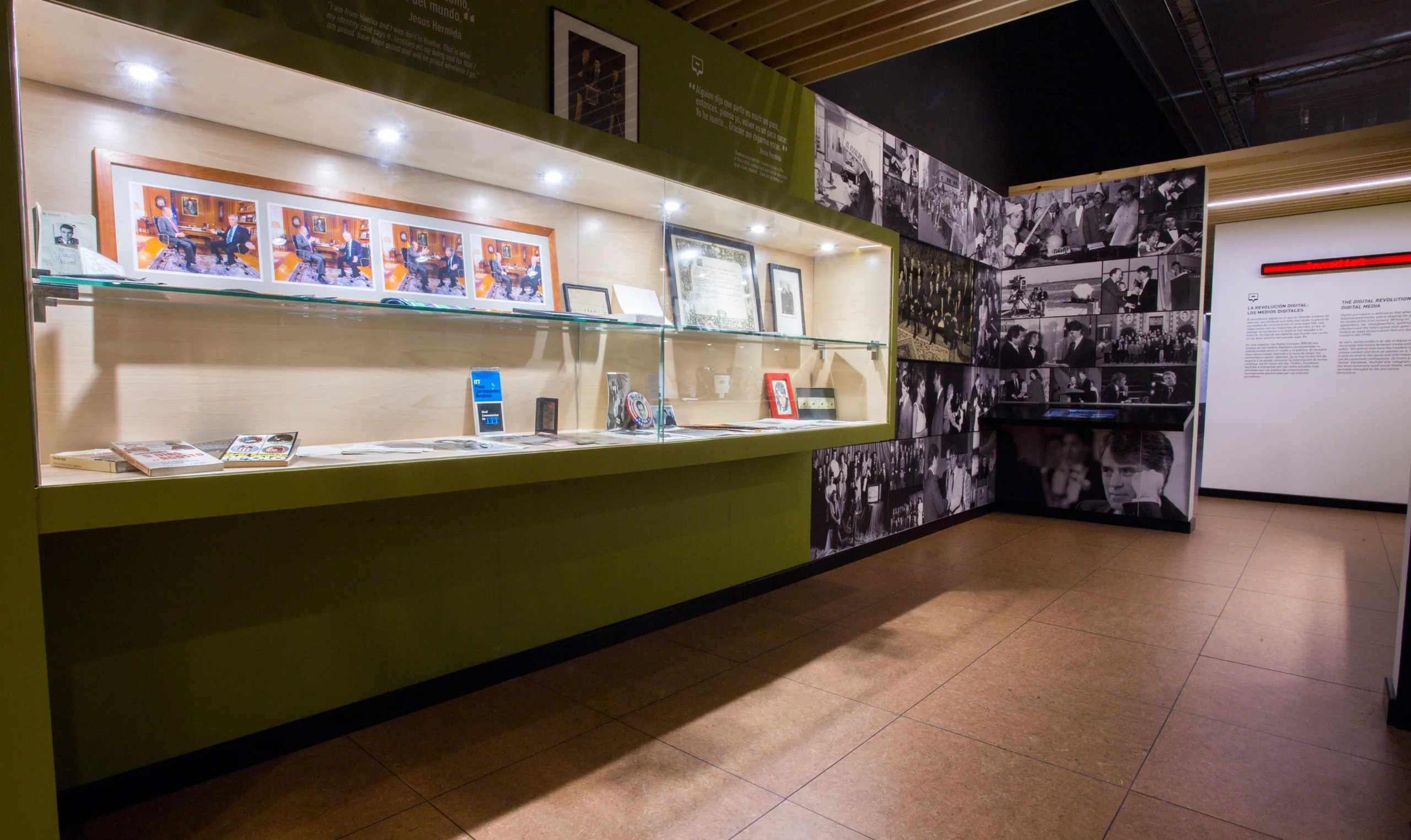Several organisations have also collaborated in its implementation, such as the Cajasol Foundation, the Spanish Radio and Television Corporation (CRTVE), Atresmedia, the family of Jesús Hermida and other private collectors.among them, NASA and the heirs of the journalist Pedro Erquicia, who have donated or donated most of the materials on display.

Jesús Hermida is one of the most important figures of 20th century journalism in Spain. Known for his career on the small screen, he will always be remembered for his broadcasting of the moon landing for TVE.
Hermida also developed a professional career in the press and radio. A work for which he has received numerous awards, with a life trajectory that is the guiding thread of this exhibition.
A large collection of the journalist’s personal belongings and curiosities, as well as other objects related to the history of the press and the media, illustrate the visitor’s tour, who will also have access to a large compilation of television and radio programmes and press clippings with Jesús Hermida as the protagonist.
Four large thematic blocks, ranging from the press to digital technologies via radio and television, also serve to learn about Jesús Hermida’s career linked to each of these media.
Special mention should be made of a space dedicated to one of the fathers of press freedom in Spain, the Huelva native Jose Isidoro Morales, a real linotype that, from the end of the 19th century, facilitated the publication of newspapers by mechanising the process of composing texts to be printed; or the space dedicated to the retransmission of the first visit of man to the moon told by Jesús Hermida for the whole of Spain.
Prepare your visit to the Jesús Hermida Communication Centre for schoolchildren by downloading the educational guides for Primary and Secondary school pupils from the following link.
Timetable:
Monday to Saturday from 10:00 to 13:00 h.
and from 17:00 to 20:00 h.
Closed on Sunday